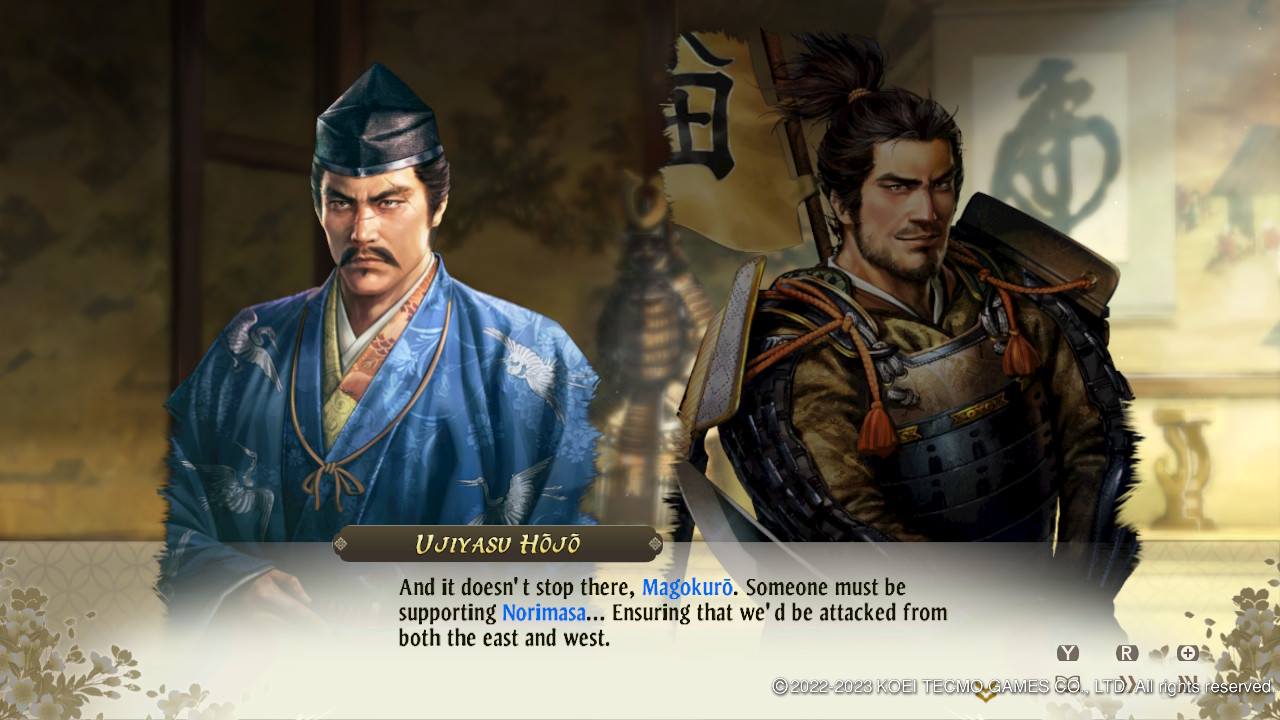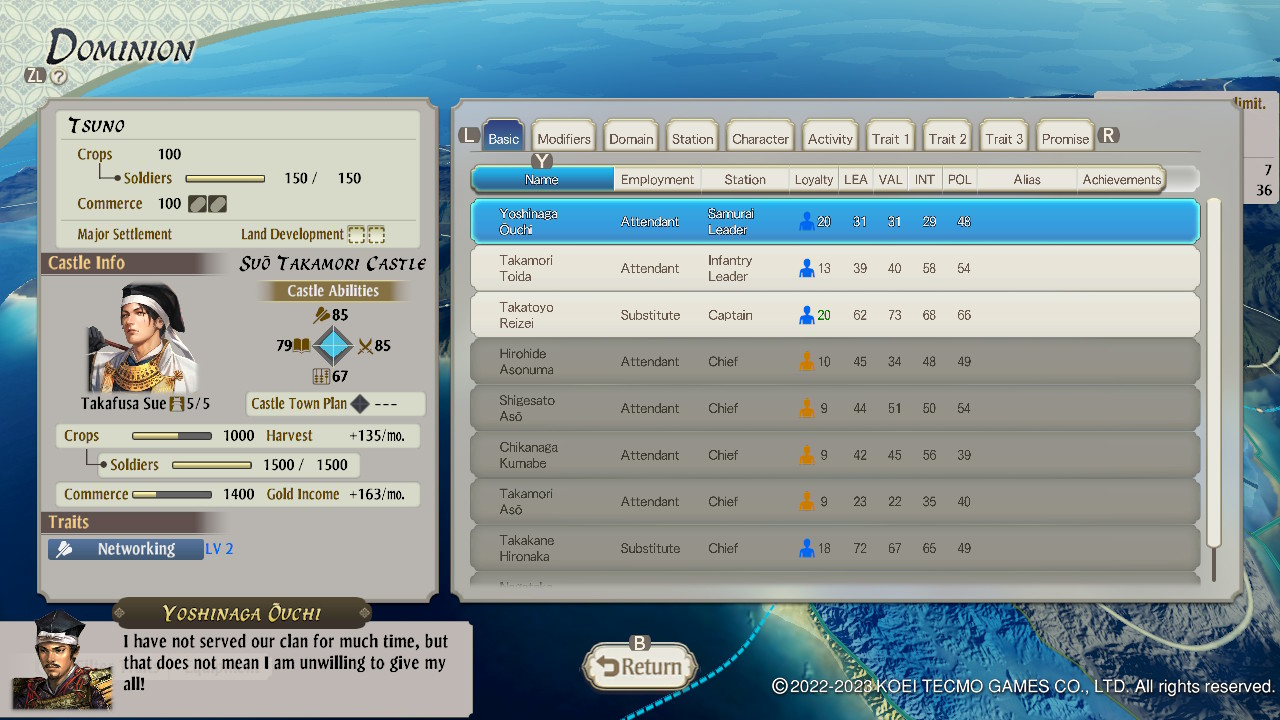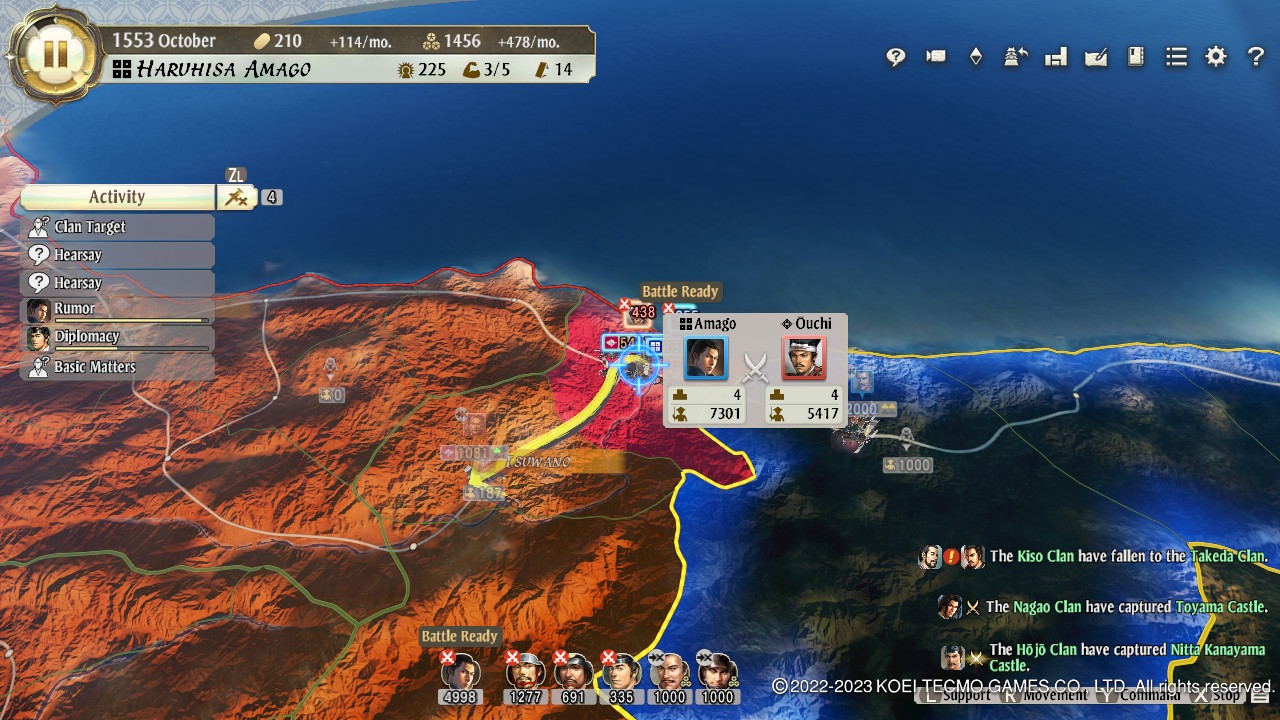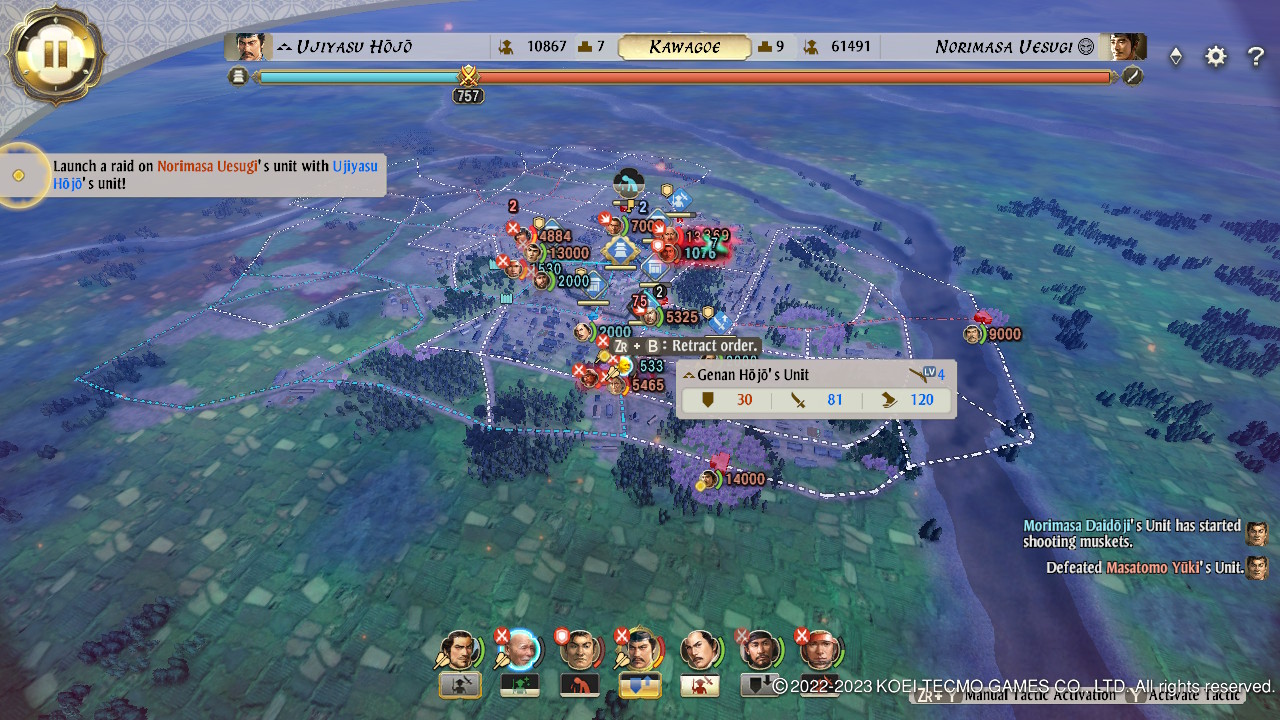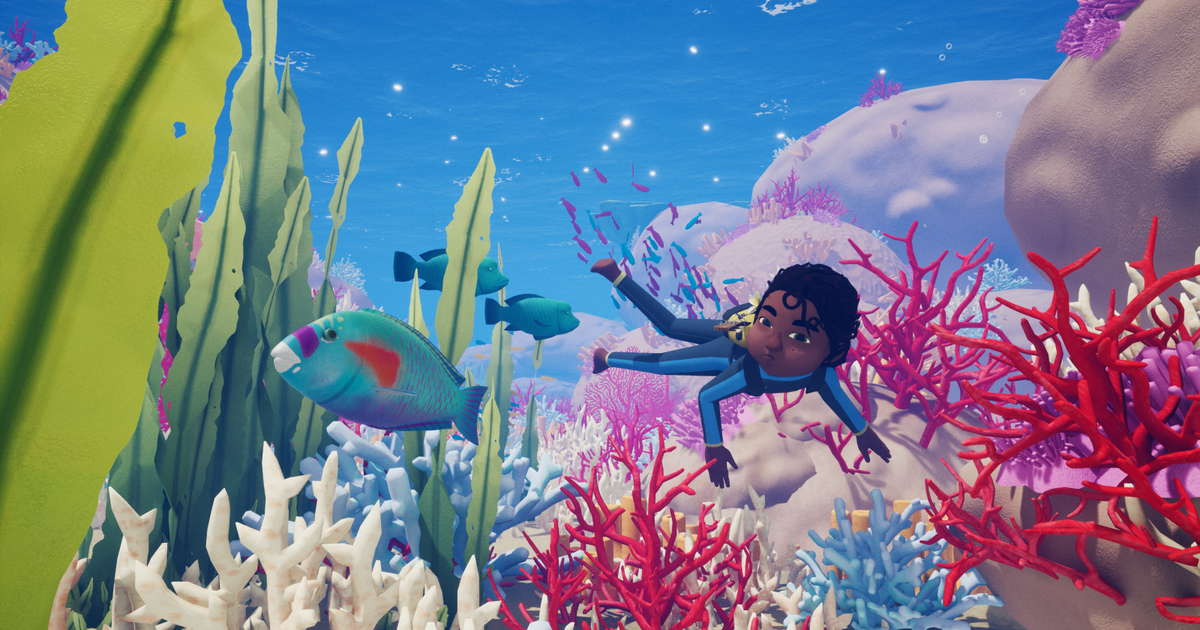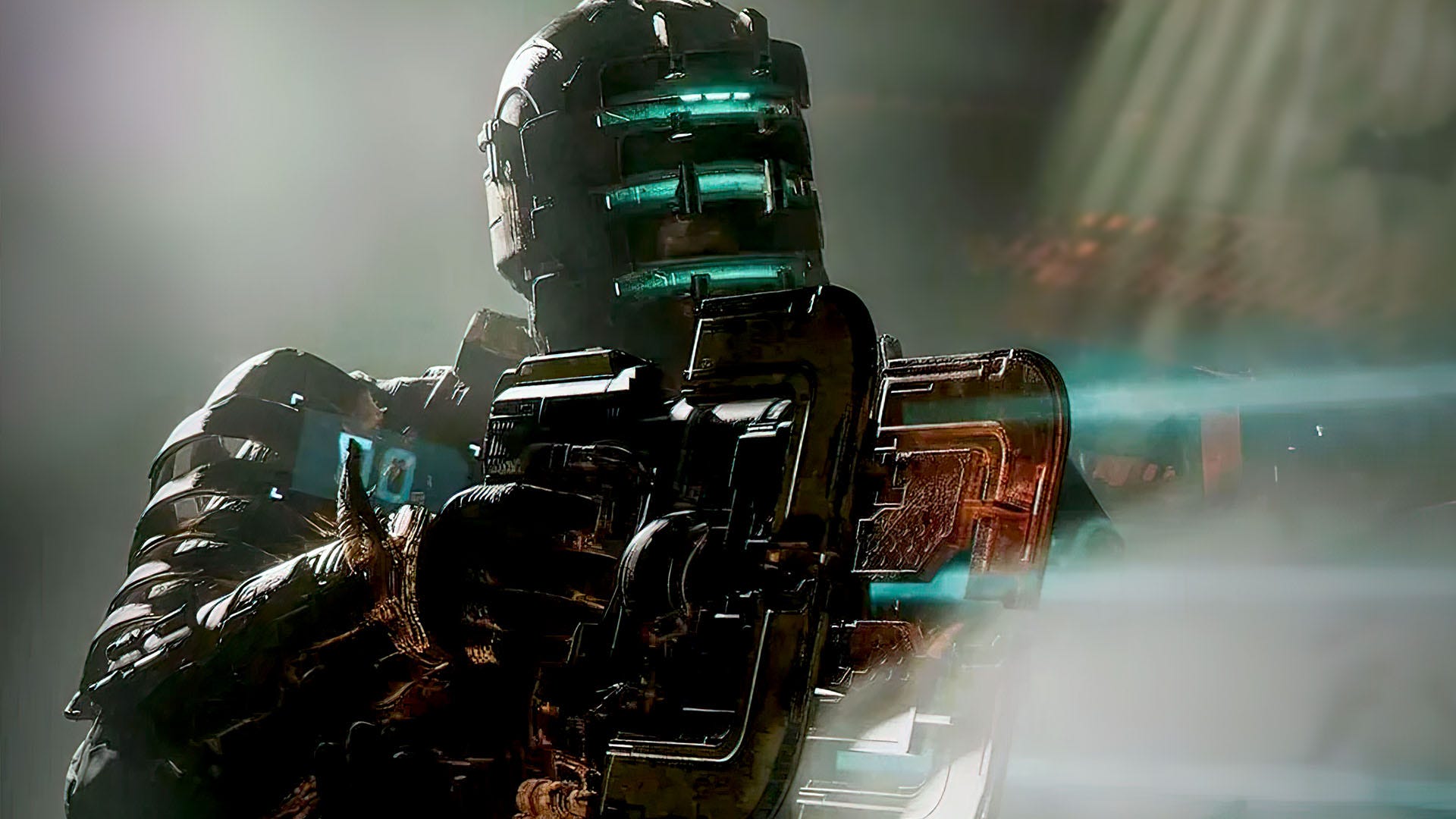My first reaction to Nobunaga’s Ambition: Awakening was, “Oh, this is one of those games.” I ran into this kind of game a lot in the ’90s—historically based, trying to simulate every aspect of the pressures, actions and consequences facing the actors as you attempt to keep track of sending your troops to war while enhancing your own kingdom, managing trade, negotiations, and underhanded tactics you could use. Dense in detail, these are games built for people absolutely gaga for historical accuracy and conveying the complexity of the time.
Nobunaga’s Ambition: Awakening is the 16th game in a series that’s been running for 40 years. Set over the feudal period of Japan, you select a time frame, choose a region of Japan over which you will be the daimyo (lord), and try to consolidate power over your region (or the entire nation) through negotiation, subterfuge, and war.
The game’s tutorial, such as it is, presents you with an absolute firehose of choices that must be made. You have to appoint lords and sub-commanders to your castles and counties. For the castle your character controls, you must also tell them how to improve the territory (building farms) or your castle (adding a market or defenses against invasion).
Next you have to adopt policies for your kingdom, again assigning retainers. But your retainers are broken into ranks, and not every one of them can accept each task. For example, if you try to negotiate with another kingdom, that retainer will be tied up for months, leaving him unavailable for a sabotage mission.
Also, your retainers will frankly not shut up when it comes to suggestions of missions you can send them on. They were constantly interrupting me while I was trying to learn the interface and build a damn irrigation channel for my castle. Why do you want to attack this kingdom I’m barely aware of? How does this help?
The number of things you must keep track of is staggering. There are policies (which must have someone in charge of them), policy chiefs who oversee the kingdom (another retainer), diplomacy, covert actions, plans to develop towns, plans for castles, general territory goals, the labor available to accomplish all these, food, money and trade.
Then there’s war, which is sort of the calling card of feudal management games, and this is where I really started to hate Nobunaga’s Ambition: Awakening.
You win the game by convincing other territories in the region to ally with you or by going to war and capturing castles. Once you decide to march on a castle, you’re presented with a list of all your military forces that can be sent to attack the castle. All of them. How do you deselect some of them? Should you deselect them? Shrug emoji! Strictly by accident, I was able to send out a force of 6,000 to attack a castle defended by 2,500 and got wiped out. I retried it again using my entire army.
“Bill,” you might be saying, “Won’t sending your entire army out of all of your territories leave your territory vulnerable to attack.” Yes it will!! Hostile forces immediately moved against my lands, but I decided to let it ride just to see how the capture mechanic of my attack would play out.
In addition, even though my massive force did in fact capture the castle, afterwards they just kind of…hung out. Units started to die because they ran out of supplies. My reputation suffered as allied forces “failed.” How do I get my army to go home? The game didn’t tell me, and because this is a new release, there is no documentation for what I consider to be basic questions.
Let me stress, this was while playing the tutorial. I felt completely lost from minute one as I was overwhelmed by options and choices, and no sense to figure out what I was supposed to be doing to enjoy the game.
Even more aggravatingly, because Nobunaga’s Ambition: Awakening is striving for historical accuracy, you’ll be periodically interrupted with updates about important things that had been happening at the time, even though they have nothing to do with the region you’re in. Imagine going out to do your laundry and suddenly you get a Star Wars-like crawl informing you that “Meanwhile, Lord Halcon continues to consolidate his forces on the Ice Planet of Zeist, thousands of miles away…”
Further, if you’re playing a Lord who was actually involved in something interesting, you get pulled into battles that have nothing to do with the game you were managing. Getting prepped for a war? Well, now you have to play a mini-game where you have to defend this particular castle, kill this particular lord, and defend this particular gate. Now, back to the game you were paying attention to.
I said at the beginning that I recognized this type of game from the ’90s. When they were on PCs. And because they came for PCs, they had a robust shortcut and command system. This is made absolutely opaque by the controls on the Switch. Your main control for commands is brought up using the Y button, then the left stick. However, to access some of your commands (like listening to your retainer’s suggestions) you have to hit ZR. This takes you to a drop down menu on the upper right hand corner where you select from a group of unhelpful icons. The X button stops and starts time, but it’s also the “yes” button for jobs and policies.
Using the sticks on the overworld map allows you to pan across the world, but you can’t zoom in using the standard controls. Instead, you have to select it from one of the ZR controls, at which point it’s stuck at that level until you change it again. This is especially aggravating during combat, when—at the default level—all you can see is a series of overlapping pixels representing the forces, with no idea how they’re doing until someone dies.
I understand that people like these dense, historical games. I also understand that people like games that have a dense variety of options. I came up playing Civ 2 on my Performa. But back when I was playing those games, I had a.) a keyboard and b.) a printed manual that was the thickness of a textbook.
I also appreciate that this is a game series that has been running for 40 years, and there’s probably a substantial audience that knows the game and has a great deal of nostalgia for it.
However, as a new player, I found it confusing rather than challenging, obtuse rather than detailed, and lacking a level of basic explanation necessary for someone who isn’t familiar with the series. Also, the controls are poorly-matched for the Switch, and the text was incredibly hard to read when I wasn’t playing the game docked on my HDTV. If this is a game you’re inclined to play, play it on the PC.
